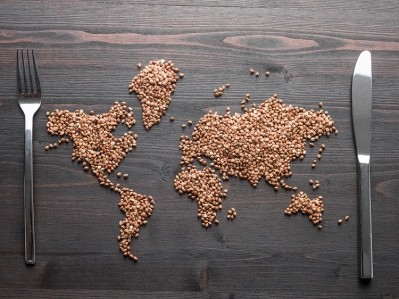Higher food prices can lower poverty and spur production growth, research states

In August 2023, researchers from the International Food Policy Research Institute (IFPRI) in Sri Lanka and the United Nations (UN) University World Institute for Development Economics Research in Finland released a study stating that increased food costs can reduce poverty and stimulate food production growth.
The study, published in Nature Food, asserts that rising food prices are a plausible explanation for stimulating short-run agricultural supply reactions that increase demand for unskilled labour and wages.
Stating that “the impacts of these spikes on poverty remain controversial”, the researchers say that while food is a considerable expense for people living in poverty, many also earn their income from the food production or marketing sectors. Further, higher prices should incentivise and increase food production efforts and output, the researchers state.
The relationship between rising food prices, poverty and production
Over the past decade, food crises have seen costs increase significantly, particularly in 2007-2008, 2010-2011 and most recently, 2021-2022 amid the COVID-19 pandemic and the war in Ukraine. The study’s researchers explored the cost implications of these crises on consumers living in poverty.
Between January 2000 and September 2022, the food element of the consumer price index (CPI) increased, on average, 30% more than the total CPI in developing countries. These figures are consistent with rising international costs, indicating the global scale of spiralling food price hikes.
Using World Bank poverty measures, the study’s scientists analysed annual data on poverty rates, real food price changes and food production growth for 33 middle-income countries (MICs) between 2000 and 2019. The study’s researchers state that alternative short-run simulation models fail to show a clear and comprehensive picture of food production and wage changes. Further, they also “probably underestimate food production by the poor”.
Year-on-year (Y-O-Y) increases in real food prices show decreases in the $3.20-per-day poverty headcount, with the exception of more urban or non-agrarian countries, the researchers state. The study suggests this may be due to increasing food prices prompting short-run agricultural supply responses that increase demand for unskilled labour and wage rises.
The poverty headcount measures the share of the population moving in or out of poverty while the poverty gap refers to changes in poverty depth. When researchers used the poverty gap measure as the dependent variable, findings concerning food price changes and urbanisation remained. At low levels of urbanisation, a five-percentage-point increase in the food-to-non-food CPI ratio is linked to a 0.6-percentage-point reduction in the poverty gap index. On the other hand, at higher levels of urbanisation, this association lessens and becomes positive in highly urbanised MICs.
“Rural populations are poorer and more likely to be farmers and potential net food producers,” the researchers stated, in response to why increases in the real prices of retail foods are linked with lower levels of poverty in more rural and more agrarian economies. In addition, the researchers hypothesised that “annual reductions in poverty presumably also require evidence that higher food prices stimulate an agricultural supply response, which in turn raises wage earnings”.
Testing that hypothesis, the researchers used a large panel on the same 33 MICs to model connections between growth rates of various agricultural production measures and real domestic food price index changes.
Relatively strong short-run supply responses for crop production are likely to result in greater demand for unskilled labour and a reasonably quick wage increase, the researchers said. However, the specific context changes over time due to structural shifts in rural and urban labour markets, such as urbanisation and migration, and agricultural practices like increased mechanisation can affect the speed and size of wage adjustments to rising food prices.
Citing previous research, the scientists explain that while global food price increases can cause problems for people living in poverty in urban areas, the researchers’ findings indicate that higher domestic food prices are typically poverty-reducing at the national level, particularly when explored over several years.
A lack of food affordability
In recent years, food affordability has become a new metric to measure food insecurity. Food price refers to the cost of a particular item or group of items and relates to how it changes over time. It is a fixed number. Food affordability, however, relates to the rate of food costs to wages. It considers a household’s ability to buy nutritious food by considering their income level.
In 2023, healthy food is twice as expensive as less nutritious food in the UK, contributing to inequalities in both diet and health, the UK charity Food Foundation reported as part of its submission to the Environment, Food and Rural Affairs Committee (EFRA) committee on the fairness in the food supply chain. In August 2023, the charity reported its Basic Basket Tracker showed that the price of nutritionally adequate weekly food shops has increased by approximately a quarter (25%) since April 2022.
In July 2022, the Food Rescue Hero Network made up of 17 food recovery organisations in the US, explored food accessibility. Local leaders could impact greater food affordability by building infrastructure, including cold storage, new distribution methods, using vacant land and increasing partnerships between the food recovery industry and consumers to reduce nutritious food waste and support food security, the participants shared.
Rising food insecurity
The State of Food Security and Nutrition in the World (SOFI) 2022 report found that approximately 3.1 billion people cannot afford the least-cost form of a healthy diet, rising from 112 million since 2019.
A 2022 World Business Council for Sustainable Development (WBCSD) report on food affordability states that while Sustainable Development Goal 2 strives to end hunger, achieve food security, improve nutrition and promote sustainable agriculture worldwide by 2030, the globe is not currently on track to meet its aim. In 2021, 216 million people faced acute food insecurity at crisis level and by 2024, the number of people facing starvation is expected to reach 400 million, a UN Global Crisis Response Group Brief details.
Food system disruptions are lowering the availability of food inputs throughout the supply chain, increasing prices and spurring the current food crisis.
Calling for action
However, the WBCSD report states there are “significant opportunities for the industry to lower the cost of nutritious foods to support the adoption of healthy, sustainable diets”.
In distribution and retail, encouraging bulk buying through co-ops or value packs may result in more stable or reduced pricing of nutritious foods. Renewed investment in new product development (NPD) can also decrease longer-term costs by raising efficiency and improving productivity.
“Businesses have an important role to play in supporting affordability, a role that is dynamic, multifaceted and far more complex than solely reducing prices,” says the WBCSD report authors.
Lowering food loss and waste during agricultural, manufacturing, food service and consumer practices can help reduce costs, the report states, as the supply chain is the source of 30% of food loss and waste. Local sourcing and raw material usage can also lower import, transport and storage costs.
“Improving the affordability of the nutritious foods that comprise a healthy diet requires actions tailored to the unique needs and characteristics of various countries and population segments,” the report adds.
The WBCSD report calls on the food industry to strengthen resilience through diversity, increase productivity and minimise waste, change consumption patterns, and improve the livelihoods of smallholders in collaboration to bring healthy and sustainable diets that are produced responsibly and within planetary boundaries to global consumers by 2030.
Sourced From: Nature Food
'Higher food prices can reduce poverty and stimulate growth in food production’
Published on: 10 August 2023
Doi: https://doi.org/10.1038/s43016-023-00816-8
Authors: D. Headey & K. Hirvonen


















